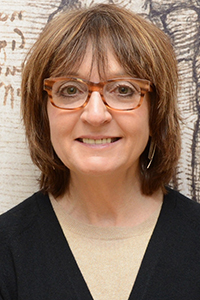"A Cloud Has Been Lifted": What Deep-Brain Stimulation Tells Us About Depression and Depression Treatments
"A Cloud Has Been Lifted": What Deep-Brain Stimulation Tells Us About Depression and Depression Treatments

Some remarkable lessons have been learned by Dr. Helen Mayberg and her colleagues in their application of deep-brain stimulation in major depression. DBS is a pioneering experimental treatment for “refractory” patients–those who have not responded to other therapies. Depressed DBS patients typically have failed to respond to antidepressant medicines and talk therapy, as well as electroconvulsive therapy (ECT).
ECT is usually given as a last resort to patients with major depression who haven’t responded to multiple treatments. It is a medical procedure, performed under general anesthesia, in which small electric currents are passed through the brain, intentionally triggering a brief seizure that lifts depressed symptoms for a period of time that varies in different patients. ECT has side effects, including short-term memory loss in some patients.
These drawbacks were part of the motivation behind the attempt by Dr. Mayberg and colleagues to test DBS in patients with treatment-resistant depression. It calls for a procedure involving surgical implantation of paired electrodes (one in each hemisphere of the brain) into a region called Area 25, which is located in the subcallosal cingulate cortex or SCC, near the center of the brain.
Those tiny electrodes are designed to deliver a small amount of current to Area 25, with the amount and frequency of the pulses fine-tuned both during and after surgery. The device, which runs on a battery that can be replaced every few years, can remain in a patient indefinitely. Many have lived with the implants–depression-free–since the first DBS operations performed over a dozen years ago.
When used for treatment-resistant depression, DBS has been likened to a pacemaker for the brain, in reference to the way pacemakers tame the beating of the heart in patients with dangerously irregular cardiac rhythm. Although Dr. Mayberg is quick to acknowledge that “we still don’t know how DBS works,” when it succeeds in bringing a deeply depressed patient from out of the depths, she suspects it does so by harmonizing communications between parts of the brain that her research has shown to be out of synch.
When it works, DBS, like other forms of treatment for depression, addresses all the major symptoms: depressed mood, irritability, irregular sleep, loss of motivation, and the inability to experience pleasure. “The whole syndrome recovers,” says Mayberg. It can be extremely dramatic in some patients, while in others it takes time to become evident–as much as a year or two. Other patients appear not to be helped by DBS, for reasons that are still unclear.
The effectiveness of DBS in some depressed people makes for an interesting comparison with DBS as used in patients with Parkinson’s disease. Since the FDA approved DBS as treatment for Parkinson’s in 1997, it has been repeatedly observed that while correct “tuning” of the DBS electrodes (which are placed in a different part of the brain in Parkinson’s) causes Parkinsonian tremors to disappear, “it does nothing to the non-motor parts of the disorder,” Mayberg says. This suggests that circuits involved in Parkinsonian tremors are different from those causing depression in the same patients–or in any people suffering from depression.
When DBS works in depression, (so far the published studies report a response rate range of 40 to 80 percent after two years of continued treatment) research suggests that optimal response depends on the precise placement of the electrodes in the SCC region. Above this spot lies the immensely complex frontal cortex, where thinking and consciousness reside; below it are circuits leading to the brain’s limbic system, which includes the amygdala, hippocampus, and other regions involved in emotional processing.
Last year, progress with DBS for depression came to a halt, at least temporarily. The largest clinical trial to date to test DBS, called BROADEN, was halted early by a medical device maker that financed the trial. The details are complicated, but Mayberg’s lessons from the experience mostly concern the way a large clinical trial is designed and how its endpoints are selected. The experience, which was searing, has sent her back to her first research principles: scrutinizing the criteria by which potential candidates for DBS are selected; determining ways to improve implantation procedures to accommodate surgical teams less experienced with the procedure; improving methods of tweaking the device once implanted in a patient; and, most importantly, performing research to determine why DBS might not work in certain patients, and how to identify them before committing to surgery. The converse is also being studied: figuring out who is likely to be helped, and helped most rapidly, before the surgical procedure is performed.
Prior to BROADEN, in which DBS was performed at many centers around the country, Mayberg led the research teams pioneering the procedure at the University of Toronto and at Emory University in Atlanta, and enjoys substantial relationships with many patients who have bravely volunteered to test the device as they are followed long-term as part of these experimental studies.
She has been deeply moved by both successes and failures, characteristically determined to learn from all outcomes. She has learned that even when DBS enables a patient to return to a life without debilitating depression, other facts of life impinge. “We can change your brain,” she says, ”but we can’t change your life.”
She says that DBS seems to allow patients to tolerate stress differently once they have recovered, and the longer they continue with DBS. But it is those patients who have achieved a sustained remission after many years of disability who remind Mayberg that all of her efforts to optimize DBS and bring it safely to more people are more than worthwhile.
She is now exploring how certain patients evolve over time: those who transition from responding well to standard treatment to being treatment-resistant. The central thought in this hypothesis is that depression, perhaps like other illnesses such as multiple sclerosis, comes in a few different types. Some patients get very sick and never recover; some get sick, then recover, but then relapse. In depression, Mayberg speculates that some patients, over the course of the illness, pass a point at which a transition in the brain occurs, which she likens to a phase shift. Despite past success with treatment, a patient relapses and then can no longer respond even to treatments like ECT.
Researchers are testing the hypothesis that patients who respond only partly to depression therapy of any type–who continue to have symptoms even when their mood is generally much better after treatment–may be at increased risk to eventually develop treatment resistance. “Residual” symptoms include anxiety or disturbed sleep or even moderately low mood, and diminished interest in life. Using data from imaging, Mayberg and colleagues are trying to test this concept, looking for evidence of progressive changes in brain circuits in patients over time, to see if such changes correlate with the development of treatment resistance.
“In certain people, the wrong treatment with only a partial effect may actually be putting you at risk of such a malignant transformation,” she proposes. It may be that DBS can bring a person who has gone past this point of transformation back into a phase where “tuning” communications between brain regions can restore the brain to health. But this is as yet unproven.
“The brain, even when it is well, is not stable,” Mayberg notes. “We have to characterize the steps of evolving resistance to treatment. Our trajectory of treatment may need to be different. This is why we have to work harder than ever to get at the origins of depression.”
— Written By Peter Tarr, Ph.D.
Click here to read the Brain & Behavior Magazine's September 2018 issue



